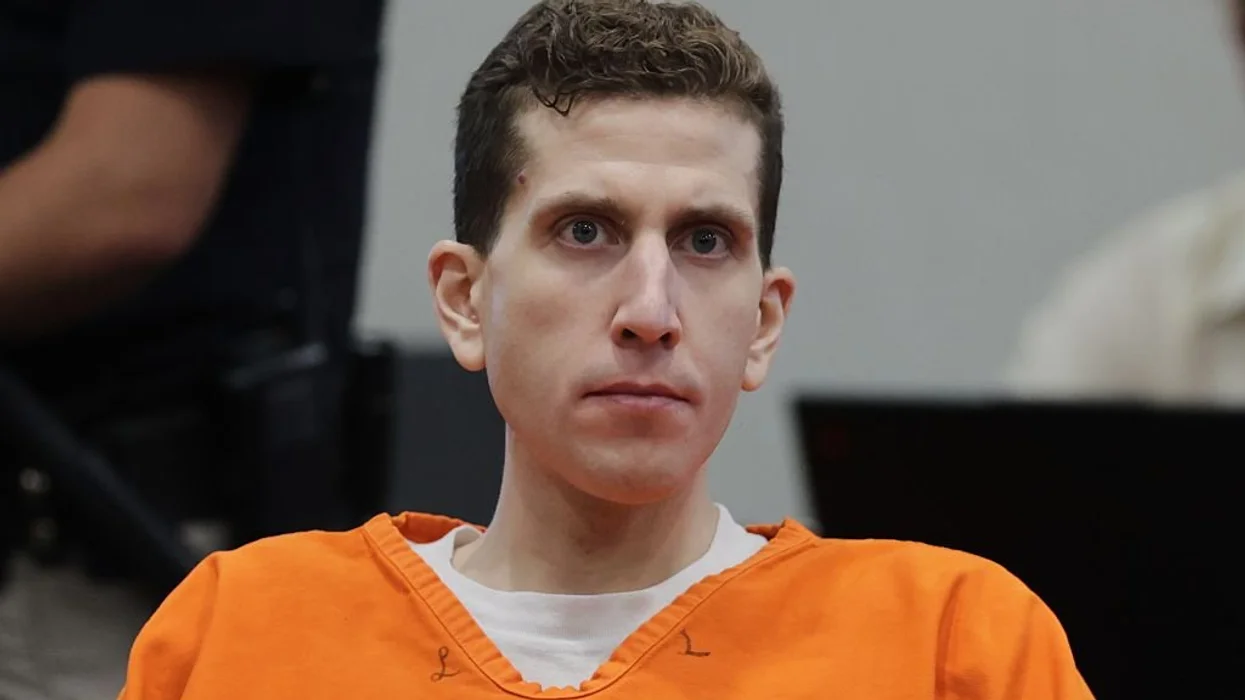An increasing number of young Al Qaeda recruits are pouring into war-ravaged areas of the Muslim world from the United States, Canada and Europe, presenting a direct threat to national security as they develop connections to jihadist leaders and acquire battlefield skills and weapons training, U.S. officials and European analysts told TheBlaze.
The increased recruitment, mostly of men in their early 20s and particularly as rebel fighters in Syria's civil war, attracted the attention of intelligence agencies last year when several of those recruits were killed in battle. They were identified through videos posted on the Internet and by family members who reported their disappearance.
 This undated file image posted on a militant website on Tuesday, Jan. 14, 2014 shows fighters from the al-Qaida linked Islamic State of Iraq and the Levant (ISIL) marching in Raqqa, Syria. (AP/militant website, File)
This undated file image posted on a militant website on Tuesday, Jan. 14, 2014 shows fighters from the al-Qaida linked Islamic State of Iraq and the Levant (ISIL) marching in Raqqa, Syria. (AP/militant website, File)
U.S. officials told TheBlaze, however, that limited human assets and resources on the ground have minimized the collection of information to track American and European recruits. They warned that with evidence pointing to increased recruitment of Western youths to Islamist groups in the next decade, it is imperative that intelligence agencies appropriately allocate resources to combat terrorism and increase human intelligence collection in the most afflicted regions.
"We failed to take control of this situation early on [in Syria] -- two years ago, we didn't even know who we were dealing with on the ground in Syria," a U.S. official with knowledge of the Syrian crisis told TheBlaze. "We twirled our thumbs and expected [Syria] to resolve itself and now it's much worse. It's a failed policy and difficult to change the course because this war could continue for years to come. No doubt, we've got to worry about a new rise in foreign fighters, particularly in the upcoming year."
The FBI and CIA began to take notice of recruits from the United States in 2007, when young Somali men returned to their homeland to join Al-Shabab, a Somali Islamic extremist group with ties to Al Qaeda, to fight against Somalia's then-transitional government. Several young men became suicide bombers and the others never returned.
There is no exact figure on how many Americans are actually fighting in Syria currently but it is believed that the number is somewhere between 50 and 100 recruits, the U.S. official told TheBlaze. But those numbers are just "a best guess because there are some we don't know of, others who have slipped off the grid and some who may be there now who left little to trace of where they were heading. "
There are an estimated 30 Canadians now fighting with extremist groups in Syria, according to recent testimony before the Canadian Senate National Security and Defense Committee.
Michel Coulombe, head of Canada's intelligence service, told the committee Monday that there are “Canadians who are abroad in support of extremist activities, including approximately 30 in Syria alone” who could return to Canada and pose an "immediate" threat to national security, Canada's National Post reported.
 This undated file image posted on a militant website on Tuesday, Jan. 14, 2014 shows fighters from the al-Qaida linked Islamic State of Iraq and the Levant (ISIL) patrolling in Raqqa, Syria. (AP/militant website, File)
This undated file image posted on a militant website on Tuesday, Jan. 14, 2014 shows fighters from the al-Qaida linked Islamic State of Iraq and the Levant (ISIL) patrolling in Raqqa, Syria. (AP/militant website, File)
European security officials began to take notice of the recruitment in 2012 when rumors began to surface that young Muslims were being recruited to fight in Syria. Those rumors appeared to be validated when airport security officials started noticing "young men flying to Turkey and other Syrian border nations with medicine bags, battle gear and other paraphernalia used in war zones," said a European official familiar with the increase of young Muslim recruits in Europe.
The total number of recruits that have been trained and are fighting in Syria is estimated to range from 5,000 to 10,000, according to a January report by Jane's Intelligence Review, a British-based journal that provides open-source information on defense and security issues.
"There is a rising level of concern among security officials across Europe ... about the threat emanating from Syria," the report stated. "The plots highlighted to date probably represent only the beginning of a threat that will evolve in various ways in the coming years. Although it is by no means the case that every individual returning from Syria will pose a domestic threat or will launch an attack, the high number of European jihadist fighters in Syria means that a threat of some sort is likely to emerge. Moreover, a protraction of Syria's civil war would mean more individuals would be drawn to the battlefield, therefore increasing the pool of potential jihadist recruits who could be a threat back at home."
Jane's described the increased recruitment as marking "a new chapter in the history of global jihadism."
The years of policy debate as to whether or not the U.S. should aid Syrian rebel forces fighting President Bashar Assad's loyalist military were part of the problem, analysts said. With the death toll from the years-long conflict estimated to have topped 136,000, a good portion of the small amount of non-lethal aid eventually sent to Syria by the U.S. State Department ultimately ended up in the hands of militant groups, many of whom train European recruits in the region, as previously reported by TheBlaze.
Moderates in Syria were trapped between the "tyranny of the Syrian government and the militant Islamists with no where to turn," said Abu Akram, a physician who witnessed first-hand the devastating effects of chemical attacks in his hometown of Ghouta last year, which prompted international threats of military action against the Assad regime. who spoke to TheBlaze in an early interview. "This war is not just about Syrians it effects everyone. "
James Carafano, a senior defense analyst with the Heritage Foundation, said the White House's policy of "leading from behind" and President Barack Obama's failure to follow through with action after setting a "red line" over the use of chemical weapons have made the situation even more critical. Without intervention, Al Qaeda and its offshoots began filling the void in the rebellion and taking up key strongholds in the northern part of the country.
Secretary of State John Kerry reportedly disclosed to 15 senators behind closed doors this weekend that the White House position on the Syrian crisis was failing, according to the Daily Beast.
“[Kerry] acknowledged that the chemical weapons [plan] is being slow rolled, the Russians continue to supply arms, we are at a point now where we are going to have to change our strategy,” Sen. Lindsey Graham (R-S.C.), who attended Kerry's briefing, told the Daily Beast. “He openly talked about supporting arming the rebels. He openly talked about forming a coalition against Al Qaeda because it’s a direct threat.”
—
Follow Sara Carter (@SaraCarterDC) on Twitter

 This undated file image posted on a militant website on Tuesday, Jan. 14, 2014 shows fighters from the al-Qaida linked Islamic State of Iraq and the Levant (ISIL) marching in Raqqa, Syria. (AP/militant website, File)
This undated file image posted on a militant website on Tuesday, Jan. 14, 2014 shows fighters from the al-Qaida linked Islamic State of Iraq and the Levant (ISIL) marching in Raqqa, Syria. (AP/militant website, File)





